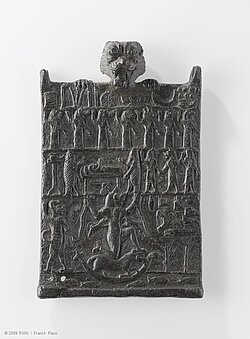Experts
EXPERTS: EXORCISTS, PHYSICIANS AND OTHERS
The exorcist
The Babylonian and Assyrian ‘exorcist’ (āšipu) performed purification rituals for houses, stables and fields, he participated in temple rituals and was competent in the ceremonies associated with the induction of people into office, the initiation of divine statues and the foundation of temples. A large proportion of the corpus of texts associated with this profession focuses on protective and therapeutic measures against various human illnesses. The exorcist who usually held his office at the royal court or within the temple hierarchy, is one of the most important healing professionals in ancient Mesopotamia, treating complex and serious illnesses by dispelling the evil force at their root, purifying the patient and protecting him against similar future threats.
The physician
The exorcist was not the only expert a sick person could consult. Besides him, the Mesopotamian letters and magical-medical texts often mention the asû, usually translated “physician.” Originally, the remit of the asû was concerned with ailments whose cause was evident (like heat stroke, external injuries, fractures, common coughs and sneezes); he would set bones, perform (hit and miss) surgery and employ medications whose preparation and application could include the recitation of incantations.
The exorcist and the physician are the two professionals that are referred to in the corpus of magical and medical texts; they participated actively in the transmission and development of this written tradition. Like the diviner (bārû) they were members of the urban elite holding offices at local temples or the royal court, and their patients would usually belong to or be associated with the same social stratum.
Magic & medicine

The subdivision of the art of healing into āšipūtu, the lore of the exorcist, and asûtu, the lore of the physician, deeply influenced the organisation and transmission of Babylonian magical and medical texts and is visible in many individual prescriptions which refer to the knowledge of both crafts as the two basic strategies of fighting illness.
But the structure of individual rituals and therapies, a survey of the tablet collections of these experts and, last but not least, letters written by them demonstrate that not only were these two strategies regarded as complementary, but that the actual competence of an individual expert was not necessarily defined by the traditional and ideal profile of his profession.
Of course it is tempting to translate āšipūtu with “magic” and asûtu with “medicine”, and in many respects the healing strategy associated with the exorcist’s profession and the therapies associated with the physician coincide with our concepts of magic and medicine respectively. But one must not forget that, even within the ideal definition of the arts of āšipūtu and asûtu, the former included physical treatments of the patient, while the latter, as a matter of course, involved the recitation of incantations and the use of other techniques and ideas that we would regard as ‘magic’.
Snake charmers, owlmen, sorcerers
Very little is known about the healers, magicians and diviners who did not have part in the written tradition. One certainly encountered them in the streets of Babylonian and Assyrian cities. A prayer to Marduk praises the god as the divine guarantor of ritual experts: “Without you the exorcist (āšipu) could not treat the sick person, without you the exorcist (āšipu), the 'owlman', apparently an ecstatic (eššebû), and the snake charmer (mušlaḫḫu) would not walk about in the street (offering their service).”
Usually experts like the owlman and the snake charmer are mentioned in the incantation literature together with other low-ranking incantation experts and cultic officials. They are often drawn as shady characters and accused of having performed illegal evil witchcraft against the patient.
In the following passage from an Akkadian incantation to be recited during the performance of the anti-witchcraft ritual Maqlû the patient describes how he is enlisting all possible agents of witchcraft against the witch who has attacked him, thereby defeating her by her own means (Maqlû VII 88–96):
I seek against you kurgarrû-hierodules and owlmen – I break your bond!
May warlocks perform rituals against you – I break your bond!
May witches perform rituals against you – I break your bond!
May kurgarrû-hierodules perform rituals against you – I break your bond!
May owlmen perform rituals against you – I break your bond!
May naršindu-sorcerers perform rituals against you – I break your bond!
May snake charmers perform rituals against you – I break your bond!
May agugillu-sorcerers perform rituals against you – I break your bond!
I slap your cheek, I tear out your tongue!
© Daniel Schwemer 2014 (CC BY-NC-ND license)





